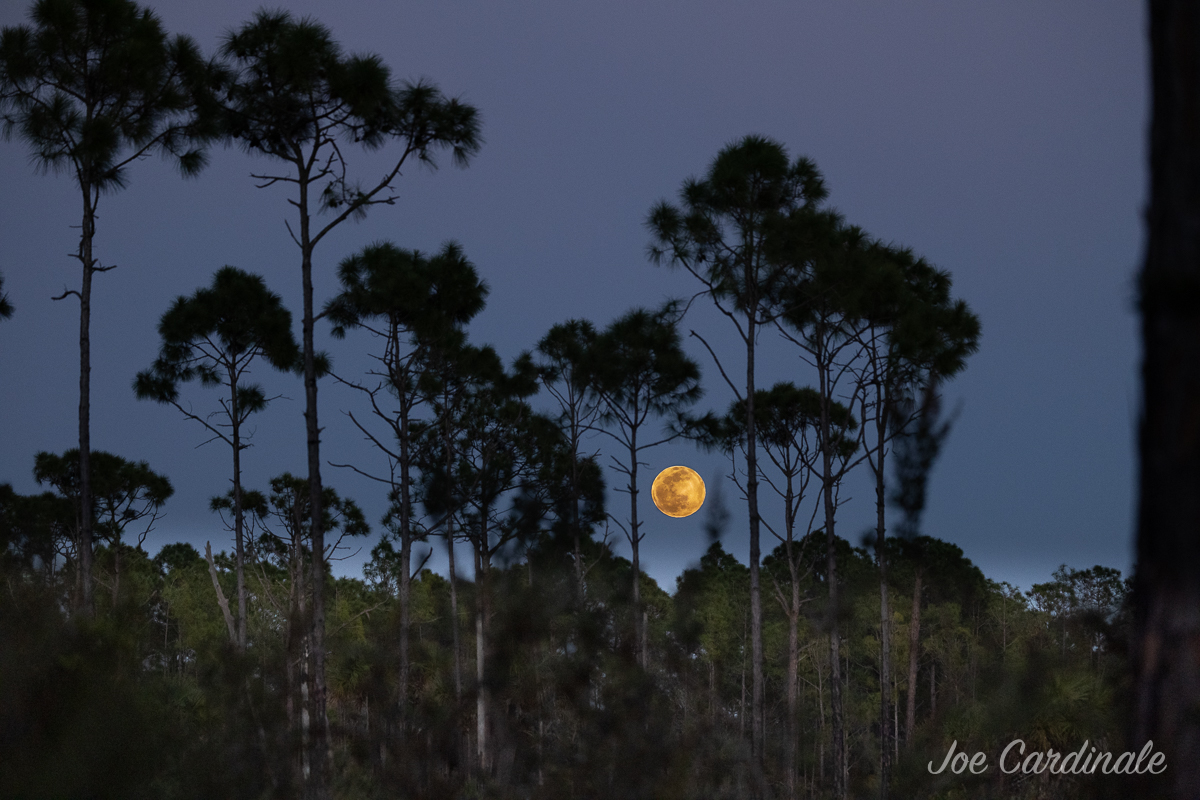One of the most common questions I hear, either on the phone or on the trails, is “What will we see?” or “Which trail is best to see wildlife?”

The answers: Sadly, we can’t predict what you will see and, all three trails are different.
Bird Rookery Swamp is our most visited trail system, and for good reason. You can walk less than a mile and see alligators, wading birds and the occasional otter or bobcat. Sightings of alligators are almost guaranteed.
This means that, when choosing a trail system to visit, people often overlook Cypress Dome Trails or CREW Marsh Trails.

There are alligators at the Cypress Dome Trails, but you’ve got a pretty long hike if you want to see them. At the CREW Marsh Trails, people seem to think that bears, boars, bobcats and panthers will be out there all day, just strolling by. And, if they don’t see large animals, there is disappointment, a feeling that is sometimes vocalized as “We didn’t see anything.”
For me, the marsh trails are my favorite. It’s the first trail system I visited, and the first trail system I worked as a volunteer. It’s the first trail system Brenda took myself and my three kids to during their Spring Break a few years ago. It’s the trail system that my youngest daughter loves to hike and my oldest loves to go trail running.
What do we see there?
Everything.
Butterflies, dragonflies, red shouldered hawks, palm warblers, eastern diamondback rattlesnakes, a giant beehive, lubber grasshoppers, wildflowers and, right now, swallow-tailed kites. And that is only a small fraction of the flora and fauna that is there.
Two of our volunteers, Jane and Laurel, recently spent a day cataloging all of the plants, birds, dragonflies and butterflies they saw at CREW Marsh Trails. It’s a great example of how much is there on the trails, so much more than bears or boars or panthers or alligators.
Feb. 2 CREW Marsh Trails Observations from Jane Wallace and Laurel Rhodes
Butterflies Birds
White Peacock, 30+ Cardinal
Pearl Crescent, 30+ White eyed Vireo
Carolina Wren
Phaon Crescent, 30+ Cat bird
Black Swallowtail, 3 Common Yellow Throat
Ceraunus Blue, 1 Red Shouldered Hawk
Monarch, 1 Great Egret
Barred Yellow, 2 Dragonflies
Great Southern White, 3 Pond hawk, female
Gulf Fritillary, 3

Flowering plant lists:
Non-native
Caesar weed, Urena lobata
Chocolateweed, Melochia corchorifolia
Red Tasselflower, Emilia fosbergii
White headed broom, Spermacoce verticillata
Native plants
American bluehearts, Buchnera americana
Blackroot, Pterocaulon pycnostachyum
Blue mistflower, Conoclinium coelestinum
Blue-eyed grass, Sisyrinchium sp.
Carolina wild petunia, Ruellia caroliniensis

Carolina willow, Salix caroliniana
Chapman’s goldenrod, Solidago odora var. chapmanii
Climbing aster, Symphyotrichum carolinianum
Coastalplain hawkweed, Hieracium megacephalon
Cow pea, Vigna luteola
False pimpernel, Lindernia sp.
Fewflower milkweed, Asclepias lanceolata
Fog fruit, Phyla nodiflora
Fourpetal St.j Jhn’s-wort, Hypericum tetrapetalum
Leavenworth’s tickseed, Coreopsis leavenworthii
Netted pawpaw, Asimina reticulata
Pennyroyal, Piloblephis rigida
Pine Hyacinth, Clematis baldwinii

Rabbitbells, Crotalaria rotundifolia
Rice button aster, Symphyotrichum dumosum
Roserush, Lygodesmia aphylla
Rosy camphorweed, Pluchea baccharis
Roundpod St. John’s-wort, Hypericum cistifolium
Rusty lyonia, Lyonia fruticosa
Saltmarch fleabane, Pluchea odorata
Showy milkwort, Asemeia violacea [formerly Polygala grandiflora]
Snow squarestem, Melanthera nivea
Sowthistle, Sonchus oleraceus
Spanish needles, Bidens alba
Twinflower, Dyschoriste sp.
Walter’s viburnum, Viburnum obovatum
Water cowbane, Tiedemannia filiformis [formerly Oxypolis filiformis]
Wax myrtle, Myrica cerifera
Whitetop starrush , Rhynchospora colorata
Yellow buttons, Polygala rugelii
